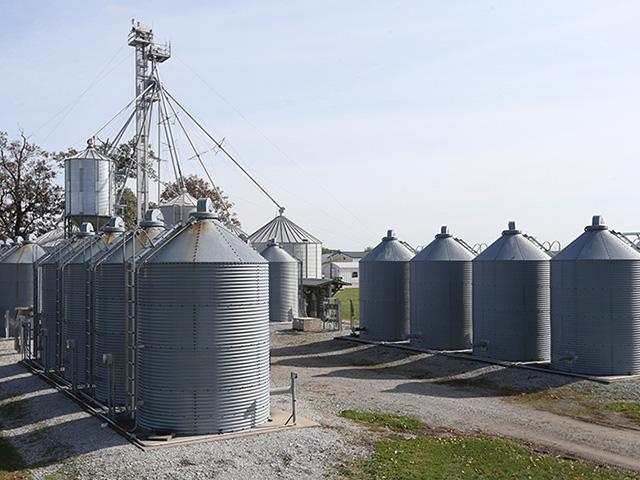2022 Saw Highest Grain Entrapments in Decade
Fatalities, Injuries From Ag Confined Spaces Increase
OMAHA (DTN) -- A new report detailing reported cases involving agricultural confined spaces in 2022 has been released by the Purdue University Agricultural Safety and Health Program in the Department of Agricultural and Biological Engineering.
The study found a 40.7% increase in the number of reported cases involving agricultural confined spaces from 2021 to 2022. Of those 83 reported cases, 24 were fatal and 59 were nonfatal, according to the U.S. Agricultural Confined Space-Related Injuries and Fatalities report.
The 83 total cases in 2022 include 42 grain entrapments, four falls into or from grain storage structures, seven asphyxiations due to deficient oxygen levels or toxic environments, seven equipment entanglements (such as those involving in- floor and sweep augers) that occurred while working inside agricultural confined spaces, and 18 cases involving grain handling facility fires or explosions.
The total number of confinement cases -- 42 grain-related entrapments -- represent a 44.8% increase from 2021, the highest number of reported grain entrapments in over a decade.
Of 41 non-grain-related cases, incidents involved livestock waste handling facilities, entanglements inside confined spaces, falls from confined space structures and grain dust explosions or fires.
Iowa reported the most agricultural confinement cases, at 24, and grain entrapment cases at nine. One female case was documented, which occurred inside a cotton module builder.
Authors of the report include Yuan-Hsin Cheng, agricultural safety and health researcher; Mahmoud Nour, postdoctoral researcher in Agricultural and Biological Engineering; Bill Field and Kingsly Ambrose, professors of agricultural and biological engineering; and Edward Sheldon, research associate, Agricultural Safety and Health Program.
P[L1] D[0x0] M[300x250] OOP[F] ADUNIT[] T[]
"In the summary, an issue we try to point out is the role of out-of-condition grain in grain entrapments," Sheldon stated in a press release. "Many entrapments result from someone entering a bin or structure to break loose clumped, spoiled grain. Keep the grain in good condition to eliminate the need to enter the bin."
"We strongly encourage farmers and agribusiness employers to recognize the hazards presented by confined spaces such as grain bins, silos and manure storage facilities, and use best management practices and effective training programs to keep their families and employees safe," Sheldon added.
Sheldon urges farmers and agribusiness employers to use educational resources like Gearing Up for Safety (https://www.asec.purdue.edu/…) from Purdue's Department of Agricultural and Biological Engineering. This program offers a youth-oriented curriculum, also related to the hazards associated with agricultural confined spaces.
A list of report highlights:
--The balance of 41 cases of grain-related entrapments in 2022 involved livestock waste handling facilities, entanglements inside confined spaces, falls from confined space structures, and grain dust explosions or fires.
--Eight incidents involved more than one victim.
--Eleven cases involved livestock waste storage pits or lagoons, eight of which were fatal
-- Three grain dust explosions resulting in 18 non-fatal injuries were documented. Fifteen of these injuries were attributed to a single incident in Iowa.
-- Twenty nine percent (24) of 2022 cases were fatal compared to 59% historically.
-- Iowa reported the most cases, 24, including those relating to fires and explosions (15 of these cases resulted from a single explosion incident), followed by Indiana (6), Minnesota (6) and Ohio (6).
-- OSHA Regions 5 and 7 have historically accounted for 67.9% of all documented agricultural confined space-related incidents.
Despite the significant resources being devoted to addressing the issue, the number of reported cases continues to be a cause for concern. Factors that have contributed to the rise in the yearly frequency are enhanced documentation of incidents due to more extensive surveillance initiatives, increased availability of case details via the Internet, and the inclusion of a wider range of types of confined space-related incidents, including those related to the storage of livestock waste and caused by fires and explosions.
To access the full report and previous years' findings, visit www.agconfinedspaces.org.
Susan Payne can reached at susan.payne@dtn.com
(c) Copyright 2023 DTN, LLC. All rights reserved.




